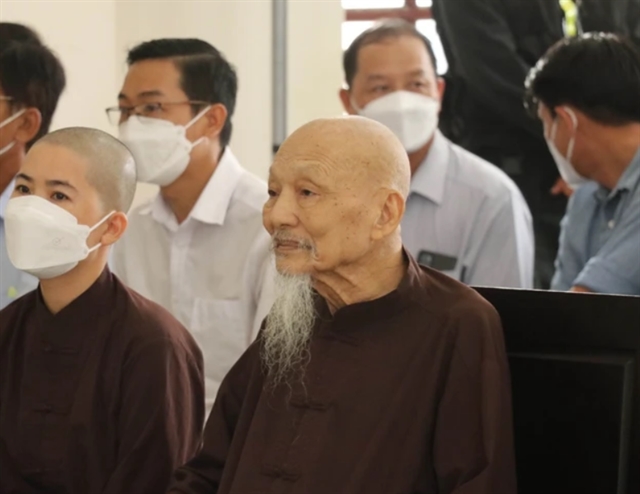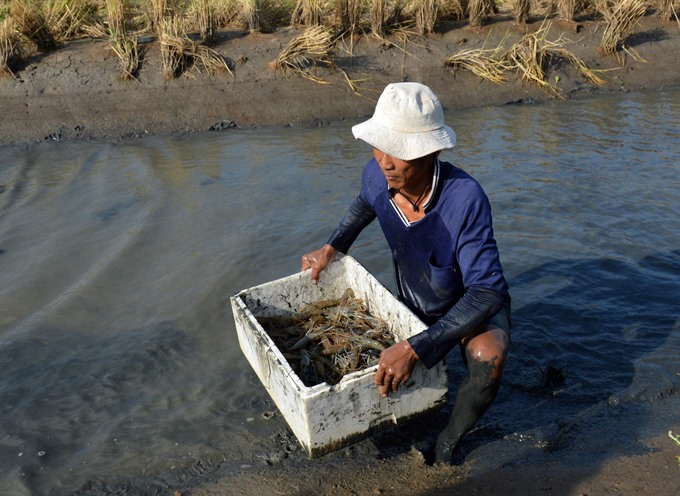 Society
Society

The southernmost province of Cà Mau, the country’s largest shrimp producer, plans to expand many of its sustainable farming models to fully exploit its potential.
 |
| Farmers harvest giant river shrimp bred in rice field in Cà Mau Province’s Thới Bình District. – VNA/VNS Photo Huỳnh Thế Anh |
CÀ MAU – The southernmost province of Cà Mau, the country’s largest shrimp producer, plans to expand many of its sustainable farming models to fully exploit its potential.
The models include industrial, advanced extensive, certified organic, super-intensive, and shrimp-rice farming.
The super-intensive model offers a yield of 40-50 tonnes per hectare per crop and a success rate of more than 85 per cent, according to the province’s Department of Agriculture and Rural Development.
Nguyễn Văn Trung, deputy head of the department’s fisheries sub-department, said the model has a high success rate.
It involves breeding up to 250 shrimp per square metre, five times the traditional number.
Many households and companies adopting it use advanced technologies, including biofloc technology and biogas ponds to treat waste.
More than 1,500 households have adopted this model in more than 2,000ha of ponds.
The advanced extensive shrimp farming model is becoming popular in many places since it fetches farmers profits of VNĐ60-70 million (US$2,590 – 3,000) per hectare a year.
They use natural food like algae and weeds to feed the shrimp, thus preventing pollution.
The model of farming giant river prawns and growing rice in the same field during the rainy season in Thới Bình District has improved farmers’ incomes.
Nguyễn Hoàng Lâm, head of the district’s Agriculture and Rural Development Division, said the district has potential for developing the model of farming giant river prawns and rice together in the rainy season and black tiger shrimp in the dry season.
Besides improving farmers’ incomes, it also helps adapt to climate change, he said.
In the province, industrial shrimp farming was being done on 9,500ha, advanced extensive farming on 133,400ha and certified organic farming on 19,000ha at the end of last year, according to the department.
Tighten management
Trung, deputy head of the department’s fisheries sub-department, said authorities plan to strengthen oversight and management of the environment in shrimp farming areas to ensure the crustaceans are not affected, he said.
Management of the quality of brood stock and disease prevention efforts would be strengthened, he said.
Farmers will be taught advanced farming techniques to meet standards such as VietGAP, global GAP and Aquaculture Stewardship Council.
The province plans to expand the intensive farming and super-intensive farming area to 13,000ha by 2020, according to the department.
Nguyễn Tiến Hải, chairman of the provincial People’s Committee, said relevant agencies and localities have been ordered to review and tweak zoning plans for intensive and super intensive shrimp farming to match the obtaining conditions.
The province has rolled out policies to support shrimp farming, invested in infrastructure such as electricity and irrigation systems and improved the environment protection.
It offers incentives to attract investment in sustainable shrimp farming models like intensive farming and super-intensive farming. – VNS









